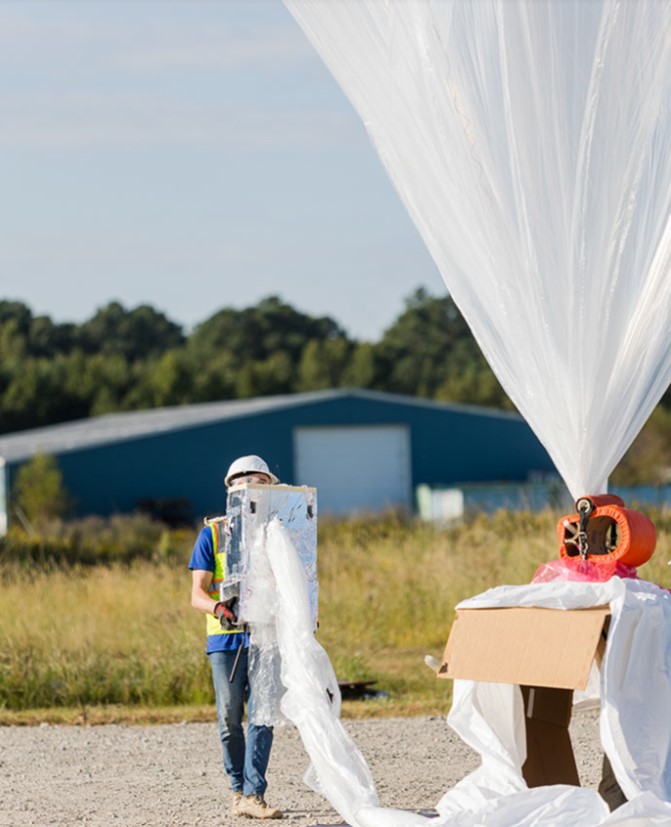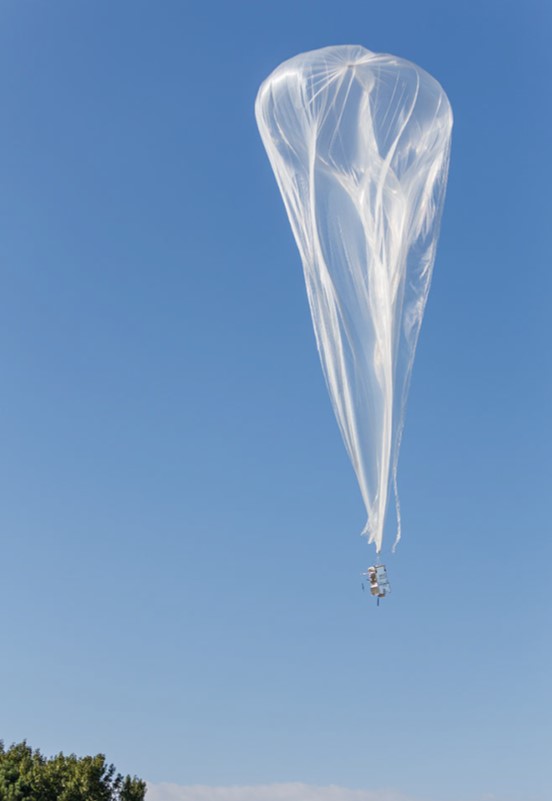Purpose of the flight and payload description
The Cyclone Balloon System was developed by Aerostar as a medium to large zero-pressure balloon platform engineered for scientific and defense applications that require short-duration flights in the stratosphere. It is capable of lifting a wide range of payloads up to 125 pounds to altitudes typically between 75,000 and 97,000 feet, with the flexibility to operate anywhere from 45,000 to over 110,000 feet. The system is designed for missions lasting between 8 and 36 hours and supports both standard and custom payload integrations. Cyclone serves not only as a science mission platform but also as a testbed for payloads intended for Aerostar's longer-duration Thunderhead system, as it shares identical hardware and software interfaces with it, making it ideal for early-stage risk reduction and validation.
The Cyclone Balloon System integrates seamlessly with Aerostar's Thunderstorm ground software suite, enabling mission planning, command, and control across the entire line of Aerostar balloon systems. Its flight control unit (FCU) delivers 360-degree pointing capability, recovery parachute deployment, and provides real-time GPS and INS data directly to the payload via Ethernet. Cyclone is compatible with Aerostar's standard gondola, Advanced Payload Gondola, or custom configurations. Payloads benefit from versatile power support, with multiple rails offering +28V, +12V, and +5V outputs at up to 375 watts per rail and a total system capacity of up to 1200 watts, depending on the flight profile.
Additionally, the system offers thermal management through programmable heaters and a heat transfer capability exceeding 200 watts, ensuring reliable operation in stratospheric conditions. Communications options include both Beyond Line-of-Sight (BLOS) and Line-of-Sight (LOS) channels via Iridium or optional high-bandwidth mesh and satellite links.
This balloon flight was a demonstration launch performed by Aerostar of one of their Cyclone zero-pressure systems from the premises of TCOM Holdings facility in Elizabeth City, North Carolina during a leadership meeting of the Program Executive Office for Intelligence, Electronic Warfare, and Sensors (PEO IEW&S), a key organization within the U.S. Army tasked with the development, acquisition, and lifecycle management of systems related to intelligence, surveillance, reconnaissance (ISR), electronic warfare (EW), and sensor technologies.During the visit, PM TS leadership reviewed developments within its five product offices, including Product Director Aerostats, and toured the aerostat facility to witness the latest advances in aerostat: Tethered-Unmanned Aerial Systems and High-Altitude Balloons technology.
Some Background
The relationship between TCOM Holdings and Aerostar International stems from TCOM's acquisition of Aerostar, which was previously a division of Raven Industries. This transaction, finalized in 2022, allowed Aerostar to become an operating unit of TCOM Holdings. Both companies focus on ISR technologies, and the acquisition aimed to enhance TCOM's capabilities in multi-domain awareness solutions by incorporating Aerostar's expertise in stratospheric platforms, radar systems, and sensor integration.
This strategic alignment enables TCOM to combine its tethered aerostat platforms with Aerostar's stratospheric balloon technology and advanced radar systems. Together, they provide solutions for border security, maritime and air surveillance, and critical infrastructure protection. The collaboration expands TCOM's offerings to defense, homeland security, and allied military clients.
Details of the balloon flight
Balloon launched on: 10/8/2024 at 13:15 UTC
Launch site: TCOM Manufacturing & Flight Test Facility, Elizabeth City, North Carolina, US
Balloon launched by: Aerostar
Balloon manufacturer/size/composition: Zero Pressure Balloon
Flight identification number: HBAL711
End of flight (L for landing time, W for last contact, otherwise termination time): 10/9/2024
Balloon flight duration (F: time at float only, otherwise total flight time in d:days / h:hours or m:minutes - ): + 28 h
Landing site: Last known position 550 km NNE of Bermuda
External references
- Aerostar website
- Interactive flight path of the balloon obtained via Airplanes Live!
- Press Release about the flight US Army - PEO IEW&S website
16631If you consider this website interesting or useful, you can help me to keep it up and running with a small donation to cover the operational costs. Just the equivalent of the price of a cup of coffee helps a lot.



